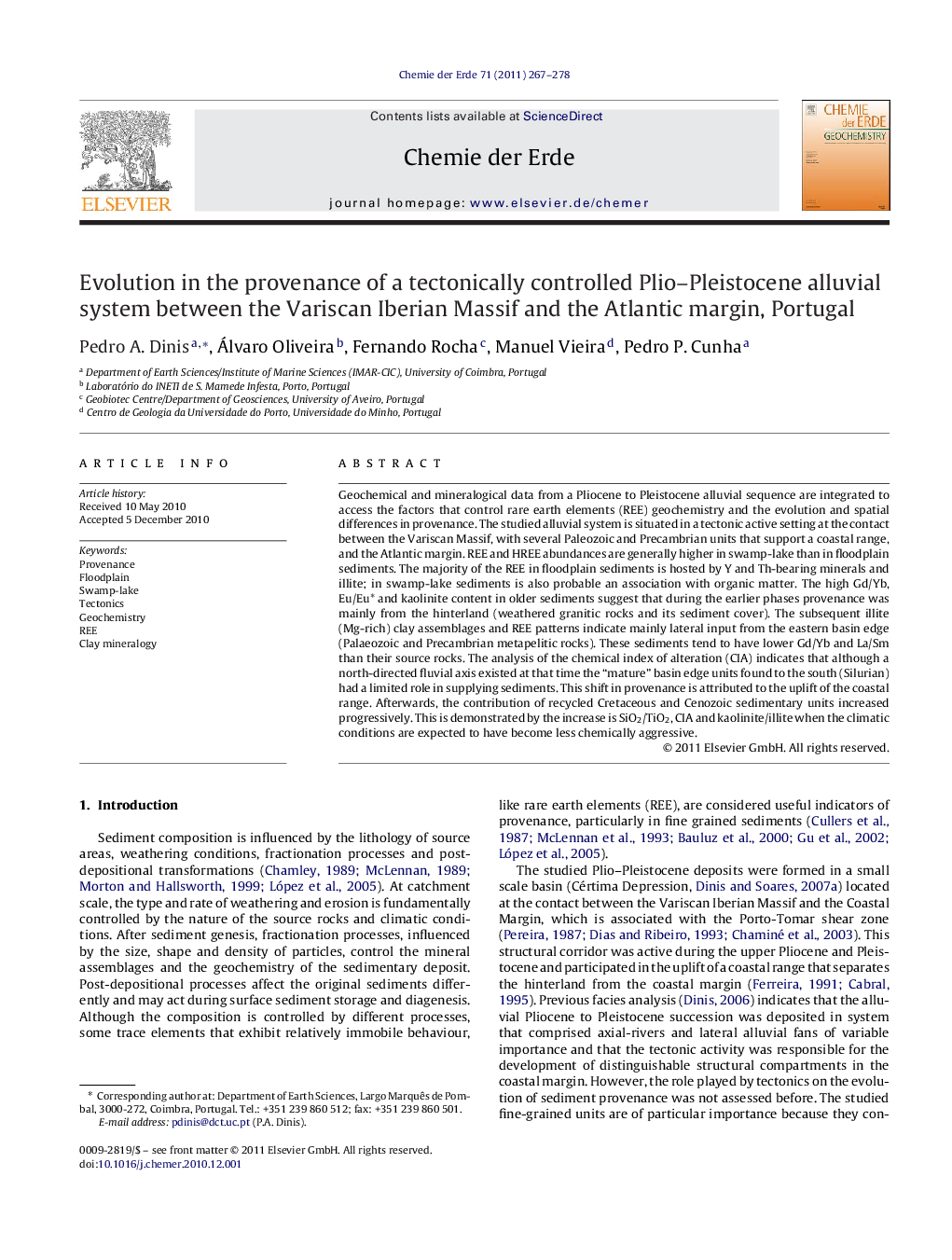| Article ID | Journal | Published Year | Pages | File Type |
|---|---|---|---|---|
| 4407010 | Chemie der Erde - Geochemistry | 2011 | 12 Pages |
Abstract
Geochemical and mineralogical data from a Pliocene to Pleistocene alluvial sequence are integrated to access the factors that control rare earth elements (REE) geochemistry and the evolution and spatial differences in provenance. The studied alluvial system is situated in a tectonic active setting at the contact between the Variscan Massif, with several Paleozoic and Precambrian units that support a coastal range, and the Atlantic margin. REE and HREE abundances are generally higher in swamp-lake than in floodplain sediments. The majority of the REE in floodplain sediments is hosted by Y and Th-bearing minerals and illite; in swamp-lake sediments is also probable an association with organic matter. The high Gd/Yb, Eu/Eu* and kaolinite content in older sediments suggest that during the earlier phases provenance was mainly from the hinterland (weathered granitic rocks and its sediment cover). The subsequent illite (Mg-rich) clay assemblages and REE patterns indicate mainly lateral input from the eastern basin edge (Palaeozoic and Precambrian metapelitic rocks). These sediments tend to have lower Gd/Yb and La/Sm than their source rocks. The analysis of the chemical index of alteration (CIA) indicates that although a north-directed fluvial axis existed at that time the “mature” basin edge units found to the south (Silurian) had a limited role in supplying sediments. This shift in provenance is attributed to the uplift of the coastal range. Afterwards, the contribution of recycled Cretaceous and Cenozoic sedimentary units increased progressively. This is demonstrated by the increase is SiO2/TiO2, CIA and kaolinite/illite when the climatic conditions are expected to have become less chemically aggressive.
Related Topics
Physical Sciences and Engineering
Earth and Planetary Sciences
Geochemistry and Petrology
Authors
Pedro A. Dinis, Álvaro Oliveira, Fernando Rocha, Manuel Vieira, Pedro P. Cunha,
